
DOC024.98.93127
ORBISPHERE Model 31x9x &
31285 Thermal Conductivity
Sensors
11/2018, Edition 7
Basic User Manual
Allgemeines Benutzerhandbuch
Manuel d'utilisation de base
Manual básico del usuario
Manuale di base per l'utente
Basisgebruikershandleiding
Grundlæggende brugervejledning
Peruskäyttöohje
Základní uživatelská příručka
Alapvető felhasználói kézikönyv
Manual de utilizare de bază
Allmän användarhandbok

English..............................................................................................................................3
Deutsch.......................................................................................................................... 14
Français......................................................................................................................... 26
Español.......................................................................................................................... 39
Italiano............................................................................................................................ 52
Nederlands....................................................................................................................64
Dansk..............................................................................................................................76
Suomi..............................................................................................................................88
Čeština........................................................................................................................... 99
Magyar......................................................................................................................... 111
Română....................................................................................................................... 124
Svenska....................................................................................................................... 137
2

Sensor specifications
Specifications are subject to change without notice.
Sensor product line
Sensor Models:
Sample Temperature Range 0-50°C
Standby Temperature Range 0-120°C
Gas Purge gas Calibration gas
Standard
(20 bar rated)
High pressure
(170 bar rated)
H
2
N
2
pure H
2
31290TC 31290HP
Argon 31291TC N/A
CO
2
31292TC 31292HP
H
2
/ He Clean air air or pure H
2
or pure He 31285TC N/A
D
2
/ He Clean air air or pure D
2
or pure He 31285TC N/A
CO
2
N
2
pure CO
2
31490TC N/A
N
2
CO
2
pure N
2
31590TC 31590HP
H
2
31591TC 31591HP
Argon 31593TC 31593HP
He 31594TC 31594HP
• All ORBISPHERE thermal conductivity sensor enclosures are certified IP68
• CE certification: EN61326-1: EMC Directive
Purge gas pressure regulator
Specification Details
Model 29089S4 (0.25 in.), 29089S6 (6 mm)
Filtration grade 40 μm
Input pressure min/max 1 bar / 16 bar
Output pressure min/max 0.5 bar / 7 bar
Standard nominal flow rate 900 Liters/minute
Condensate volume 22 cm
3
Temperature range (ambient and media) -10°C to 60°C
Purge gas dew point -10°C (+14°F)
Construction materials Housing: metal; Condensate bowl: polycarbonate; Bowl guard: metal
Weight 460 g.
Dimension in cm (overall) 21 x 11.5 x 8
English 3

Sensor membrane specifications
In-line instrument applications (Table 1)
Sensor type
31290 H
2
(purge gas N
2
)
For other purge gases, please contact your Hach representative for
specification.
Specification Membrane 29561A Membrane 2952A Membrane 2935A
Thickness [μm] 25 25 25
Material PFA ETFE ECTFE (Halar
®
)
Recommended
applications
Waste gas offgas, reactor
coolant
Reactor coolant High H
2
level
Radiation limits 10
5
rad 10
8
rad 10
8
rad
Measurement range at
25°C
0-2 ppm, or 0-25 cc/kg, or
0-1.5 bar
0-10 ppm, or 0-120 cc/kg,
or 0-6 bar
0-20 ppm, or 0-220 cc/kg,
or 0-12 bar
Accuracy (sample
temperature 20-50°C
within ± 5°C of calibration
temperature)
The greater of ±1% of
reading or ± 2 ppb, or ±
0.03cc/kg, or ± 1.5 mbar
The greater of ±1% of
reading or ± 8 ppb, or ±
0.1cc/kg, or ± 6 mbar
The greater of ±1% of
reading or ± 25 ppb, or ±
0.4 cc/kg, or ± 20 mbar
Accuracy (sample
temperature 0-50°C
independent of calibration
temperature)
The greater of ±3% of
reading or ± 15 ppb or ±
0.18 cc/kg or ± 6 mbar
The greater of ±3% of
reading or ± 60 ppb or ±
0.6 cc/kg, or ± 20 mbar
The greater of ±3% of
reading or ± 150 ppb or ±
2.5 cc/kg, or ± 50 mbar
Measurement cycle
(seconds)
17
Sample flow rate
1
(through flow chamber)
500 mL/min 200 mL/min 100 mL/min
Linear flow rate
2
(past
sensor socket)
N/A N/A N/A
In-line instrument applications (Table 2)
Sensor type
31490 CO
2
(purge
gas N
2
)
31590 N
2
(purge gas
CO
2
)
31285TC H
2
/D
2
and He (clean air
purge)
Specification Membrane 29561A Membrane 29561A Membrane 2952A
Membrane
29561A
Thickness [μm] 25 25 25 25
Material PFA PFA ETFE PFA
Recommended
applications
In-line beverage In-line beverage Reactor coolant Waste gas PWR
Radiation limits 10
5
rad 10
5
rad 10
8
rad 10
5
rad
Measurement range at
25°C
0-7 V/V, or 0-15 g/kg,
or 0-10 bar
0-350 ppm, or
0-300 mL/L, or
0-20 bar
0-100% H
2
/D
2
or
0-10 bar
0-100% H
2
/D
2
or
0-4 bar
1
Minimal flow through an ORBISPHERE 32001 flow chamber
2
Minimal flow past an ORBISPHERE 29501 sensor socket
4 English

Sensor type
31490 CO
2
(purge
gas N
2
)
31590 N
2
(purge gas
CO
2
)
31285TC H
2
/D
2
and He (clean air
purge)
Specification Membrane 29561A Membrane 29561A Membrane 2952A
Membrane
29561A
Accuracy (sample
temperature 20-50°C
within ± 5°C of
calibration temperature)
The greater of ±1%
of reading or ±
0.006V/V, or ±
0.012g/kg, or ±
8 mbar
The greater of ±2% of
reading or ± 0.3 ppm,
or ± 0.25mL/L, or ±
15 mbar
The greater of
±2% of reading or
± 1% H
2
/D
2
The greater of
±2% of reading or
± 0.2% H
2
/D
2
Accuracy (sample
temperature 0-50°C
independent of
calibration temperature)
The greater of ±2%
of reading or ±
0.02 V/V or ±
0.048g/kg or ±
14 mbar
The greater of ±4% of
reading or ± 1 ppm or
± 0.8 mL/L or ±
34 mbar
N/A N/A
Measurement cycle
(seconds)
22
3
60 60
Sample flow rate
4
(through flow chamber)
100 mL/min 300 mL/min 200 mL/min 500 mL/min
Linear flow rate
5
(past
sensor socket)
50 cm/sec 150 cm/sec N/A N/A
Sensor weight and dimensions
Weight 1050 g (±20g).
Figure 1 Sensor dimensions
3
Measurement cycle for 3624 ProBrix application is 15 seconds
4
Minimal flow through an ORBISPHERE 32001 flow chamber
5
Minimal flow past an ORBISPHERE 29501 sensor socket
English 5

Expanded manual version
For additional information, refer to the expanded version of this manual, which is available on the
manufacturer's website.
General information
In no event will the manufacturer be liable for direct, indirect, special, incidental or consequential
damages resulting from any defect or omission in this manual. The manufacturer reserves the right to
make changes in this manual and the products it describes at any time, without notice or obligation.
Revised editions are found on the manufacturer’s website.
Safety information
N O T I C E
The manufacturer is not responsible for any damages due to misapplication or misuse of this product including,
without limitation, direct, incidental and consequential damages, and disclaims such damages to the full extent
permitted under applicable law. The user is solely responsible to identify critical application risks and install
appropriate mechanisms to protect processes during a possible equipment malfunction.
Please read this entire manual before unpacking, setting up or operating this equipment. Pay
attention to all danger and caution statements. Failure to do so could result in serious injury to the
operator or damage to the equipment.
Make sure that the protection provided by this equipment is not impaired. Do not use or install this
equipment in any manner other than that specified in this manual.
Use of hazard information
D A N G E R
Indicates a potentially or imminently hazardous situation which, if not avoided, will result in death or serious injury.
W A R N I N G
Indicates a potentially or imminently hazardous situation which, if not avoided, could result in death or serious
injury.
C A U T I O N
Indicates a potentially hazardous situation that may result in minor or moderate injury.
N O T I C E
Indicates a situation which, if not avoided, may cause damage to the instrument. Information that requires special
emphasis.
Precautionary labels
Read all labels and tags attached to the instrument. Personal injury or damage to the instrument
could occur if not observed. A symbol on the instrument is referenced in the manual with a
precautionary statement.
This is the safety alert symbol. Obey all safety messages that follow this symbol to avoid potential
injury. If on the instrument, refer to the instruction manual for operation or safety information.
This symbol indicates that a risk of electrical shock and/or electrocution exists.
This symbol indicates the presence of devices sensitive to Electro-static Discharge (ESD) and
indicates that care must be taken to prevent damage with the equipment.
6 English

This symbol, when noted on a product, indicates the instrument is connected to alternate current.
Electrical equipment marked with this symbol may not be disposed of in European domestic or
public disposal systems. Return old or end-of-life equipment to the manufacturer for disposal at no
charge to the user.
Products marked with this symbol indicates that the product contains toxic or hazardous substances
or elements. The number inside the symbol indicates the environmental protection use period in
years.
What you have received
Check that all mounting hardware is included. Note that, unless the sensor is part of ORBISPHERE
equipment that includes it, the sensor must be installed in an ORBISPHERE socket or flow chamber
that allows contact with the sample flow to be analyzed (refer to Installation on page 8 for details).
TC sensor for CO
2
, N
2
or H
2
measurement
Figure 2 Sensor components
1 Storage cap 4 Output connection to instrument
2 Protection cap 5 Input connection from the optional in-line
temperature sensor
3 Purge gas inlet 6 Purge gas outlet
The sensor head is protected by a screw-on plastic storage cap. The sensor can connect to an
optional in-line temperature sensor (No. 5 in Figure 2) that allows you to install a temperature sensor
directly into the sample flow.
The sensor has been carefully checked and calibrated in a production environment and following our
quality control procedures. As such, there is no need for any sensor maintenance or a change of
English
7

membrane, prior to installation. An easily removed label is stuck on the protection cap to remind you
of this.
Two small identification clips (stamped with the letter “T”) will be delivered with every sensor. They
should be used to identify the connection cable between the sensor and a multi-channel analyzer.
This is important in order to avoid connecting the sensor to the wrong measurement board.
Connecting a TC sensor to an EC measurement board (and vice versa) can damage both the sensor
and the electronics.
A sensor maintenance kit
The maintenance kit includes the material needed to service and maintain the sensor.
Storage information
During a short shutdown period (such as weekends), the sensor may stay in place with the
instrument turned on, and purge gas supplied. If the inactive period is likely to last longer, remove the
sensor, wipe it dry and store it properly, using the plastic storage cap supplied.
C A U T I O N
We recommend you use the ORBISPHERE 32605 Purge safety backup unit to ensure that the purge gas supply
to the sensor will not get interrupted in case of a mains power outage. See Purge safety backup unit
on page 10.
Instructions for sensor storage
• If the sensor’s head shows deposits, rinse it under tap water.
• Wipe the sensor head dry.
• Put a small silica desiccant bag inside the storage cap.
• Put the storage cap in place.
• Store the sensor in a safe dry place.
• The storage place must be at a stable room temperature.
C A U T I O N
Pay attention to rapid temperature change situations, such as air conditioning being turned on and off daily, that
may create condensation inside the sensor’s cell and damage the electronics inside.
Installation
Pre-installation
8
English

1. The sensor head is protected by a screw-on black plastic storage cap. This cap should be
removed.
2. Once the storage cap has been removed, an orange sticker will be visible informing you not to
remove the protection cap. This is because the sensor has already been checked and calibrated
prior to shipping, and no sensor maintenance or membrane change is required prior to first use.
However, this label must be removed.
3. Attach the two small identification clips (stamped with the letter “T”) to each end of the sensor
cable so they are clearly visible. These clips indicate this is a TC sensor, so when connecting to a
multi-channel analyzer, care must be taken to connect it to the TC measurement board.
4. Make sure that the gas purge supply is set to ON before the sensor is installed in a line or a flow
chamber that contains liquid or humidity. If the sensor does not have purge gas supply when it is
in aqueous liquid or condensing humidity, permanent damage to the sensing element will occur.
Sensor positioning
Unless the sensor is part of the ORBISPHERE equipment that includes it, the sensor must be
installed in an ORBISPHERE socket or flow chamber, that allows the contact with the sample fluid to
be analyzed.
The sensor and measuring instrument are connected by a cable and 10 pin connector. The standard
sensor cable length is 3 meters.
Ensure that the sensor will be mounted:
• perpendicular to the pipe
• on a horizontal pipe section (or on flow-ascending vertical pipe)
• minimum of 15 meters away from the pump's discharge side
• in a place where the sample flow is stable and rapid, and as far as possible from:
• valves
• pipe bends
• the suction side of any pumps
• a CO
2
injection system or similar
Note: There may be situations where not all the above conditions can be met. If this is the case, or you have any
concerns, please consult your Hach representative to appraise the situation and define the best applicable solution.
Sensor insertion
• Insert the sensor straight into the flow chamber or socket. Do not twist the sensor.
• Hand tighten the attaching collar.
• Connect the sensor cable.
• Check for leaks; replace O-rings if product leaks are visible.
Instructions for micro volume flow chambers
Do not twist the sensor when inserting it into a micro volume flow chamber. This rotation may twist
the protection cap, thus changing the membrane position. This can modify the membrane measuring
conditions, and affect measurement precision.
Sensor removal
• Shut off the sample flow and drain the sampling circuit from liquid or gas pressure.
• Remove the sensor cables connected at the sensor side.
• Remove the purge gas connections.
• Hold the sensor body in one hand to avoid rotation, and unscrew the collar with other hand.
• Pull the sensor straight out of its socket, or flow chamber.
• Check that both O-rings remain in place inside the flow chambers.
• Install the storage cap on the sensor.
English
9

Purge gas system
Purge gas regulator
The role of the ORBISPHERE 29089 gas regulator is to deliver purge gas filtered at
40 μm. Attach the unit to a suitable bracket, using the M3 threaded holes on the back. It’s
position should be vertical ± 5%. The gas flow is indicated by an arrow on the regulator's
body.
Maintenance:
Drain the condensate periodically. Unscrew by hand the drain at the bottom of the bowl.
If filter is contaminated:
• Turn off the gas supply
• Unscrew the bowl by hand
• Unscrew the black disc at the bottom
• Remove the white composite filter
• Wash under clean tap water, blow dry, and install
Purge gas supply
Make sure there is no interruption in the purge gas supply. The use of a backup gas cylinder and an
automatic changeover valve, that activates when the first cylinder is empty, are recommended.
Use a 6 mm flexible (nylon or PVC) or rigid (stainless steel) line to connect the pressure regulator
and thermal conductivity sensor to the purge gas supply. Swagelok connectors (6 mm or 1/4") are
provided.
A short length of plastic tube is supplied for the purge gas to exit the sensor. To insert, push the tube
firmly into the orifice. To remove, push on the ring surrounding the tube, and pull the tube out. For
certain applications such as waste gas, a 3 mm (1/8") Swagelok fitting is provided for the purge gas
exit, to enable safe evacuation of an eventually hazardous gas.
A source of dry and filtered gas (pure at 99.8%) is required with a flow rate set at 10 to 50 mL/min.,
and a pressure regulated at 2 bar gauge. Do not exceed this, since excess pressure will deform the
membrane and change measurements.
To check the flow rate, put the exit tube into a cup of water. With the instrument turned on, you
should see at least three bubbles per second during the purge cycle.
N O T I C E
Do not leave the exit tube in water, as there is a risk that moisture will get sucked back into the sensor and
damage it.
Purge safety backup unit
The gas analyzer must be switched on at all times, and purge gas must be
constantly supplied to purge the sensor cell, to prevent damage to the
sensor electronics.
However, in the event of a mains power outage, the 32605 purge backup
unit ensures that the purge gas supply to the TC sensor is not interrupted at
any time. The cycle is slower than usual (around one minute), for
approximately four days.
The green LED is on as long as the battery charge is OK. The red LED is on
when charging is needed. To save batteries, both LEDs are out when the
backup unit is in use, and mains power is out.
In-line temperature sensor
The in-line temperature sensors give the sample temperature directly from the sample flow, as a
replacement for the temperature sensor installed inside the thermal conductivity sensor.
Use of the in-line temperature sensor is recommended when the environment or sample experience
temperature changes. It provides a direct sample temperature measurement to the instrument, that is
not influenced by the ambient temperature.
10
English

The in-line temperature sensor connects at the rear of the sensor. When connected, the in-line
temperature signal bypasses the internal temperature sensor signal, and is sent to the measuring
instrument via the thermal conductivity sensor cable as usual. When the in-line temperature sensor is
unplugged, the internal temperature sensor is re-activated.
There are a number of different temperature sensors depending on the specific application
requirements.
External pressure sensor
The system can be fitted with an external pressure sensor. This enables a measure of fraction of gas
under variable pressure conditions during gas phase measurement.
Two models are available, depending on applied pressure:
• 28117 Pressure sensor 0 - 5 bar absolute
• 28117C Pressure sensor 0 - 1 bar absolute
C A U T I O N
Do NOT exceed the pressure range of the sensor. This would permanently deform the sensor membrane, thus
delivering incorrect pressure values in the future.
The external sensor connects to the ORBISPHERE measuring equipment with a 1 meter cable and a
4 pin connector (an optional extension cable can be used, but total length should not exceed
50 meters).
The external pressure sensor can be installed in the model 32002.xxx multi parameter flow chamber.
It is held in place by a blue threaded collar. Tightness is assured by the O-ring on the sensor seat.
Maintenance
Maintenance schedule
Service includes membrane replacement and external cleaning to restore the original sensor
sensitivity. This means low running costs and down time reduced to a minimum.
The membrane needs to be replaced once or twice a year depending on application conditions. This
can be tailored accordingly.
Note: If you are not familiar with ORBISPHERE sensor servicing, your Hach representative will be glad to assist
you
Testing the sensor condition
Periodically, inspect visually the sensor head for any deposits. Rinse it under clean tap water, and
dry with a clean tissue.
To verify the sensor, check measurements against a known standard sample value:
• If reading deviation is ±1% of the expected value, no action needs to be taken.
• If deviation exceeds ± 1%, perform a new calibration.
• If deviation exceeds 10% of the original values, replace the membrane.
C A U T I O N
Carry out the maintenance in a clean dry place in order to avoid damaging the sensor's precision components,
and also to prevent water or humidity from getting into the sensor.
English 11

Membrane replacement
Removing the membrane
1. Place the thermal conductivity sensor vertical with the head up. Remove the plastic storage cap.
2. Unscrew the protection cap, using the tool provided in the maintenance kit.
C A U T I O N
Never remove the protection cap, unless you plan to replace the membrane.
3. Pay attention to the components inside the protection cap. Note the assembly order of each item.
4. Pull up the membrane holding ring with the tool provided in the maintenance kit. The membrane
holding ring comes in two slightly different internal diameters, depending on the membrane(s)
total thickness. Remove membrane(s).
Installing the membrane
1. The membrane mounting surface must be clean and even. Replace the membrane O-ring on the
sensor head with a new one.
Note: The 29039.0 Nitril O-ring can be reused if it is still in good condition. Membrane O-rings are part of the
protection cap kit.
2. In the maintenance kit, pick up the two part membrane mounting tool. Install the sleeve over the
sensor head (end with shoulder downwards).
Note: Once installed, a membrane cannot be reused. Avoid touching the membrane with bare fingers, as this
may affect its sensitivity.
3. Take a few membranes out of the storage box. Using tweezers included in the kit, pick up one
membrane from the stack, and gently place it on the sensor tip. Make sure it is centered
Note: Distinguish the membrane from the protection paper:
• The membrane is transparent (translucent).
• The protection paper is opaque.
12
English

4. Place the membrane holding ring on the installation tool tip.
C A U T I O N
To avoid damaging the membrane, make sure that the tool tip is totally clean and its surface is even.
5. Insert the installation tool inside the guiding sleeve.
6. Push the installation tool firmly downwards. This clasps the mounting ring onto the sensor head,
folding the membrane(s) over the sensor tip. Remove the installation tool and guiding sleeve.
Visually check for correct ring placement, try to push it down with your fingers. Check that the
membrane is tight, with no wrinkles.
7. Prepare the protection cap for installation. All parts must be absolutely dry and clean. Replace all
the parts inside the protection cap with new ones (except the grille), and place them in the order
they were removed. The Tefzel washers, under the cap, should be slightly lubricated with silicone
grease.
Note: The illustration is an example only. Your configuration may differ.
8. Tighten the protection cap finger tight. Then, complete the process using the tool provided in the
maintenance kit. Insert into each of the four holes in turn, and tighten as far as possible. Tighten
each hole only once.
Note: The grille inside the protection cap should be free to move during tightening. Therefore, and to avoid
damage to the membrane, do not touch the grille during the tightening process.
9. Always store the sensor in a dry environment, with the storage cap installed.
Note: A sensor that has been taken apart, or serviced must always be calibrated. Allow the sensor to settle for
30 minutes to allow measurements to stabilize and the membrane(s) to relax, before performing the sensor
calibration.
Calibrate the sensor to check that the membrane has been installed correctly and not been
damaged. If an error message appears on your instrument, then the membrane has been damaged
or incorrectly installed.
English
13

Sensorspezifikationen
Die Spezifikationen können ohne Vorankündigung Änderungen unterliegen.
Produktlinie Sensor
Sensormodelle:
Probentemperaturbereich 0-50°C
Standby-Temperaturbereich 0-120°C
Gas Spülgas Kalibrierungsgas
Standard
(20 bar)
Hochdruck
(170 bar)
H
2
N
2
reiner H
2
31290TC 31290HP
Argon 31291TC N/A
CO
2
31292TC 31292HP
H
2
/ He Reine Luft Luft oder reines H
2
oder reines He 31285TC N/A
D
2
/ He Reine Luft Luft oder reines D
2
oder reines He 31285TC N/A
CO
2
N
2
reines CO
2
31490TC N/A
N
2
CO
2
reines N
2
31590TC 31590HP
H
2
31591TC 31591HP
Argon 31593TC 31593HP
He 31594TC 31594HP
• Alle Wärmeleitfähigkeitssensorgehäuse von ORBISPHERE weisen den Schutzgrad IP68 auf.
• CE-Zertifizierung: EN 61326-1: EMV-Richtlinie
Reinigungsgas-Druckregler
Spezifikation Details
Modell 29089S4 (0,25 in.), 29089S6 (6 mm)
Filterungsgrad 40 μm
Einlassdruck min./max. 1 bar / 16 bar
Auslassdruck min./max. 0.5 bar / 7 bar
Standard-Nennflussrate 900 Liter/Minute
Kondensatvolumen 22 cm
3
Temperaturbereich (Umgebung und Medium) -10°C bis + 60°C
Taupunkt Reinigungsgas -10°C (+ 14°F)
Konstruktionsmaterialien
Gehäuse: Metall; Kondensatkugel: Polykarbonat;
Kugelabdeckung: Metall
Gewicht 460 g
Abmessungen in cm (insgesamt) 21 x 11,5 x 8
14 Deutsch

Spezifikationen der Membran des Sensors
Anwendungen des Leitungsinstruments (Tabelle 1)
Sensortyp
31290 H
2
(Reinigungsgas N
2
)
Bitte wenden Sie sich für andere Reinigungsgase für die Spezifikationen
an Ihren Hach-Vertreter.
Spezifikation Membran 29561A Membran 2952A Membran 2935A
Stärke [μm] 25 25 25
Material PFA ETFE ECTFE (Halar
®
)
Empfohlene Anwendungen Abgas, Reaktorkühlung Reaktorkühlung Hoher H
2
-Pegel
Strahlungsgrenzwerte 10
5
rad 10
8
rad 10
8
rad
Messbereich bei 25°C
0-2 ppm, oder 0-25 cc/kg,
oder 0-1,5 bar
0-10 ppm, oder
0-120 cc/kg, oder 0-6 bar
0-20 ppm, oder
0-220 cc/kg, oder
0-12 bar
Genauigkeit
(Probentemperatur 20-50°C
innerhalb ± 5°C der
Kalibrierungstemperatur)
Der größere Wert von
±1% der Anzeige oder
±2 ppb, oder ± 0,03cc/kg,
oder ± 1,5 mbar
Der größere Wert von
±1% der Anzeige oder ±
8 ppb, oder ± 0,1 cc/kg,
oder ± 6 mbar
Der größere Wert von
±1% der Anzeige oder
± 25 ppb, oder ±
0,4 cc/kg, oder ±
20 mbar
Genauigkeit
(Probentemperatur 0-50°C
unabhängig von der
Kalibrierungstemperatur)
Der größere Wert von
±3% der Anzeige oder ±
15 ppb oder ± 0,18 cc/kg
oder ± 6 mbar
Der größere Wert von
±3% der Anzeige oder ±
60 ppb oder ± 0,6 cc/kg,
oder ± 20 mbar
Der größere Wert von
±3% der Anzeige oder
± 150 ppb oder ±
2,5 cc/kg, oder ±
50 mbar
Messzyklus (Sekunden) 17
Probendurchflussmenge
1
(durch Flusskammer)
500 ml/min 200 ml/min 100 ml/min
Lineare Flussrate
2
(hinter dem
Sensorsockel)
N/A N/A N/A
Anwendungen des Leitungsinstruments (Tabelle 2)
Sensortyp
31490 CO
2
(Reinigungsgas N
2
)
31590 N
2
(Reinigungsgas
CO
2
)
31285TC H
2
/D
2
und He
(Reinigung mit sauberer Luft)
Spezifikation Membran 29561A Membran 29561A Membran 2952A
Membran
29561A
Stärke [μm] 25 25 25 25
Material PFA PFA ETFE PFA
Empfohlene Anwendungen Leitung Getränke Leitung Getränke Reaktorkühlung Abgas PWR
Strahlungsgrenzwerte 10
5
rad 10
5
rad 10
8
rad 10
5
rad
Messbereich bei 25°C
0-7 V/V, oder
0-15 g/kg, oder
0-10 bar
0-350 ppm, oder
0-300 ml/l, oder
0-20 bar
0-100% H
2
/D
2
oder 0-10 bar
0-100% H
2
/D
2
oder 0-4 bar
1
Min. Fluss durch eine Flusskammer ORBISPHERE 32001
2
Min. Fluss hinter Sensorsockel ORBISPHERE 29501
Deutsch 15

Sensortyp
31490 CO
2
(Reinigungsgas N
2
)
31590 N
2
(Reinigungsgas
CO
2
)
31285TC H
2
/D
2
und He
(Reinigung mit sauberer Luft)
Spezifikation Membran 29561A Membran 29561A Membran 2952A
Membran
29561A
Genauigkeit
(Probentemperatur 20-50°C
innerhalb ± 5°C der
Kalibrierungstemperatur)
Der größere Wert
von ±1% der Anzeige
oder ± 0,006V/V,
oder ± 0,012g/kg,
oder ± 8 mbar
Der größere Wert
von ±2% der Anzeige
oder ± 0,3 ppm, oder
± 0,25ml/l, oder ±
15 mbar
Der größere Wert
von ±2% der
Anzeige oder ± 1%
H
2
/D
2
Der größere
Wert von ±2%
der Anzeige
oder ± 0,2%
H
2
/D
2
Genauigkeit
(Probentemperatur 0-50°C
unabhängig von der
Kalibrierungstemperatur)
Der größere Wert
von ±2% der Anzeige
oder ± 0,02 V/V oder
± 0,048g/kg oder ±
14 mbar
Der größere Wert
von ±4% der Anzeige
oder ± 1 ppm oder ±
0,8 ml/l oder ±
34 mbar
N/A N/A
Messzyklus (Sekunden) 22
3
60 60
Probendurchflussmenge
4
(durch Flusskammer)
100 ml/min 300 ml/min 200 ml/min 500 ml/min
Lineare Flussrate
5
(hinter
dem Sensorsockel)
50 cm/Sek. 150 cm/Sek. N/A N/A
Gewicht und Abmessungen des Sensors
Gewicht 1050 g (±20g).
Abbildung 1 Sensorabmessungen
3
Der Messzyklus für 3624 ProBrix-Anwendung beträgt 15 Sekunden
4
Min. Fluss durch eine Flusskammer ORBISPHERE 32001
5
Min. Fluss hinter Sensorsockel ORBISPHERE 29501
16 Deutsch

Erweiterte Version des Handbuchs
Zusätzliche Informationen finden Sie in der ausführlichen Version dieser Bedienungsanleitung auf
der Website des Herstellers.
Allgemeine Informationen
Der Hersteller ist nicht verantwortlich für direkte, indirekte, versehentliche oder Folgeschäden, die
aus Fehlern oder Unterlassungen in diesem Handbuch entstanden. Der Hersteller behält sich
jederzeit und ohne vorherige Ankündigung oder Verpflichtung das Recht auf Verbesserungen an
diesem Handbuch und den hierin beschriebenen Produkten vor. Überarbeitete Ausgaben der
Bedienungsanleitung sind auf der Hersteller-Webseite erhältlich.
Sicherheitshinweise
H I N W E I S
Der Hersteller ist nicht für Schäden verantwortlich, die durch Fehlanwendung oder Missbrauch dieses Produkts
entstehen, einschließlich, aber ohne Beschränkung auf direkte, zufällige oder Folgeschäden, und lehnt jegliche
Haftung im gesetzlich zulässigen Umfang ab. Der Benutzer ist selbst dafür verantwortlich, schwerwiegende
Anwendungsrisiken zu erkennen und erforderliche Maßnahmen durchzuführen, um die Prozesse im Fall von
möglichen Gerätefehlern zu schützen.
Bitte lesen Sie dieses Handbuch komplett durch, bevor Sie dieses Gerät auspacken, aufstellen oder
bedienen. Beachten Sie alle Gefahren- und Warnhinweise. Nichtbeachtung kann zu schweren
Verletzungen des Bedieners oder Schäden am Gerät führen.
Stellen Sie sicher, dass die durch dieses Messgerät bereitgestellte Sicherheit nicht beeinträchtigt
wird. Verwenden bzw. installieren Sie das Messsystem nur wie in diesem Handbuch beschrieben.
Bedeutung von Gefahrenhinweisen
G E F A H R
Weist auf potenzielle oder unmittelbare Gefahrensituationen hin, die zum Tot oder zu schweren Verletzungen
führen, falls sie nicht vermieden werden.
W A R N U N G
Weist auf potenzielle oder unmittelbare Gefahrensituationen hin, die zum Tot oder zu schweren Verletzungen
führen können, falls sie nicht vermieden werden.
V O R S I C H T
Weist auf eine potenzielle Gefahrensituation hin, die zu kleineren oder geringfügigen Verletzungen führen
können.
H I N W E I S
Kennzeichnet eine Situation, die, wenn sie nicht vermieden wird, das Gerät beschädigen kann. Informationen, die
eine besondere Hervorhebung erforderlich machen.
Warnaufkleber
Lesen Sie alle am Gerät angebrachten Aufkleber und Hinweise. Nichtbeachtung kann Verletzungen
oder Beschädigungen des Geräts zur Folge haben. Im Handbuch wird in Form von Warnhinweisen
auf die am Gerät angebrachten Symbole verwiesen.
Dies ist das Sicherheits-Warnsymbol. Befolgen Sie alle Sicherheitshinweise im Zusammenhang mit
diesem Symbol, um Verletzungen zu vermeiden. Wenn es am Gerät angebracht ist, beachten Sie
die Betriebs- oder Sicherheitsinformationen im Handbuch.
Dieses Symbol weist auf die Gefahr eines elektrischen Schlages hin, der tödlich sein kann.
Deutsch 17

Dieses Symbol zeigt das Vorhandensein von Geräten an, die empfindlich auf elektrostatische
Entladung reagieren. Es müssen Vorsichtsmaßnahmen getroffen werden, um die Geräte nicht zu
beschädigen.
Dieses Symbol weist darauf hin, dass das Instrument an Wechselstrom angeschlossen werden
muss.
Elektrogeräte, die mit diesem Symbol gekennzeichnet sind, dürfen nicht im normalen öffentlichen
Abfallsystem entsorgt werden. Senden Sie Altgeräte an den Hersteller zurück. Dieser entsorgt die
Geräte ohne Kosten für den Benutzer.
Produkte, die mit diesem Symbol gekennzeichnet sind, enthalten toxische oder gefährliche
Substanzen oder Elemente. Die Ziffer in diesem Symbol gibt den Umweltschutzzeitraum in Jahren
an.
Das haben Sie erhalten
Stellen Sie sicher, dass alle für die Montage erforderlichen Bauteile vorhanden sind. Bitte bedenken
Sie, dass der Sensor auf einem ORBISPHERE-Sockel oder einer Flusskammer installiert werden
muss, die den Kontakt mit dem zu analysierenden Probenfluss gestatten muss, falls er nicht Teil
einer ORBISPHERE-Ausrüstung ist, die ihn umfasst (für detaillierte Angaben siehe Installation
auf Seite 20).
Ein Wärmeleitfähigkeitssensor (CO
2
, N
2
oder H
2
)
Abbildung 2 Komponenten des Sensors
1 Lagerungskappe 4 Anschluss des Ausgangs zum Instrument
2 Schutzkappe 5 Anschluss des Eingangs eines optionalen
Leitungstemperatursensors
3 Einlass Reinigungsgas 6 Auslass Reinigungsgas
18 Deutsch

Der Sensor wird während der Lagerung durch eine aufschraubbare Kunststoffkappe geschützt. Der
Sensor kann optional eine Verbindung mit einem Leitungstemperatursensor (Nr. 5 in Abbildung 2)
aufweisen , der die Installation eines Temperatursensors direkt im Probenfluss gestattet.
Der Sensor wurde im Werk gemäß unserer Qualitätssicherungsstandards gründlich überprüft und
kalibriert. Daher ist vor der Installation keine Wartung des Sensors und keine Ersetzung der
Membran erforderlich. Auf der Schutzkappe ist ein einfach zu entfernender Aufkleber angebracht, um
Sie daran zu erinnern.
Mit jedem Sensor werden zwei kleine Identifizierungsclips (bedruckt mit dem Buchstaben “T”)
geliefert. Sie sollten zur Identifizierung des Anschlusskabels zwischen dem Sensor und einem
Multikanalanalysator verwendet werden. Dies ist wichtig, um zu vermeiden, dass der Sensor an die
falsche Messkarte angeschlossen wird. Falls ein TC-Sensor an eine EC-Messkarte angeschlossen
wird (und umgekehrt), können der Sensor und die Elektronik beschädigt werden.
Einen Sensor-Wartungskit
Der Wartungs-Kit umfasst das Material, das für die Wartung des Sensors erforderlich ist.
Informationen zur Lagerung
Während kurzer Zeiträume (wie an Wochenenden) kann der Sensor vor Ort mit eingeschaltetem
Instrument und Reinigungsgaszufuhr bleiben. Entfernen Sie den Sensor, falls er für einen längeren
Zeitraum nicht benutzt wird, trocknen Sie ihn ab und lagern Sie ihn mit der mitgelieferten
Kunststoffkappe.
V O R S I C H T
Wir empfehlen den Einsatz der Reserve-Reinigungseinheit ORBISPHERE 32605, um sicherzustellen, dass die
Reinigungsgaszufuhr des Sensors auch bei einem Stromausfall nicht unterbrochen wird. Siehe Reserve-
Reinigungsgaseinheit auf Seite 22.
Anweisungen für die Lagerung des Sensors
• Spülen Sie den Kopf des Sensors unter fließendem Wasser ab, falls er Ablagerungen aufweist.
• Trocknen Sie den Kopf des Sensors ab.
• Füllen Sie etwas Silikattrocknungsmittel in die Lagerungskappe.
• Bringen Sie die Lagerungskappe an.
• Lagern Sie den Sensor an einem sicheren und trockenen Ort.
• Der Sensor muss bei stabiler Raumtemperatur gelagert werden.
V O R S I C H T
Bitte beachten Sie, dass schnelle Temperaturänderungen, wie zum Beispiel durch das tägliche Ein- und
Ausschalten der Klimaanlage, zur Bildung von Kondenswasser in der Sensorzelle und zur Beschädigungen der
Elektronik führen können.
Deutsch 19

Installation
Vor der Erstinbetriebnahme
1. Der Sensor wird während der Lagerung durch eine aufschraubbare schwarze Kunststoffkappe
geschützt. Diese Kappe sollte entfernt werden.
2. Nachdem Entfernen der Lagerungskappe wird ein oranger Aufkleber sichtbar, der Sie darauf
aufmerksam macht, die Schutzkappe nicht zu entfernen. Der Sensor wurde bereits vor der
Auslieferung überprüft und kalibriert und daher ist vor der ersten Benutzung keine Wartung des
Sensors und kein Auswechseln der Membran erforderlich. Dieser Aufkleber muss jedoch entfernt
werden.
3. Bringen Sie die beiden kleinen Identifizierungsclips (bedruckt mit dem Buchstaben “T”) so an den
Enden des Sensorkabels an, dass sie gut sichtbar sind. Diese Clips zeigen an, dass es sich um
einen TC-Sensor handelt, da beim Anschließen an einen Multikanalanalysator darauf geachtet
werden muss, dass er an die TC-Messkarte angeschlossen wird.
4. Stellen Sie sicher, dass die Spülgaszufuhr eingeschaltet ist, bevor der Sensor in Reihe oder in
einer Durchflusskammer mit Flüssig- oder Feuchtigkeit installiert wird. Befindet sich der Sensor in
wässrigen Flüssigkeit oder kondensierender Feuchtigkeit und besitzt keine Spülgaszufuhr, wird
das Sensorelement möglicherweise dauerhaft beschädigt.
Positionierung des Sensors
Falls er nicht Teil einer ORBISPHERE- Ausrüstung ist, die ihn umfasst, muss der Sensor auf einem
ORBISPHERE-Sockel oder einer Flusskammer installiert werden muss, die den Kontakt mit dem zu
analysierenden Probenfluss gestatten.
Der Sensor und das Messinstrument sind über ein Kabel und Steckverbinder mit 10 Kontaktstiften
miteinander verbunden. Die Standardlänge des Sensorkabels beträgt 3 Meter.
Stellen Sie sicher, dass der Sensor wie folgt montiert wird:
• senkrecht zum Rohr
• in einem horizontalen Abschnitt des Rohrs (oder an einem vertikalen Rohr mit aufsteigendem
Fluss)
• mindestens 15 Meter von der Auslassseite der Pumpe entfernt
• an einer Stelle, an der der Fluss stabil und schnell ist, und so weit wie möglich entfernt von:
• Ventilen
• Rohrbögen
• den Ansaugseiten von Pumpen
• CO
2
-Einspritzsystemen oder ähnlichen Vorrichtungen
20
Deutsch
Pagina se încarcă...
Pagina se încarcă...
Pagina se încarcă...
Pagina se încarcă...
Pagina se încarcă...
Pagina se încarcă...
Pagina se încarcă...
Pagina se încarcă...
Pagina se încarcă...
Pagina se încarcă...
Pagina se încarcă...
Pagina se încarcă...
Pagina se încarcă...
Pagina se încarcă...
Pagina se încarcă...
Pagina se încarcă...
Pagina se încarcă...
Pagina se încarcă...
Pagina se încarcă...
Pagina se încarcă...
Pagina se încarcă...
Pagina se încarcă...
Pagina se încarcă...
Pagina se încarcă...
Pagina se încarcă...
Pagina se încarcă...
Pagina se încarcă...
Pagina se încarcă...
Pagina se încarcă...
Pagina se încarcă...
Pagina se încarcă...
Pagina se încarcă...
Pagina se încarcă...
Pagina se încarcă...
Pagina se încarcă...
Pagina se încarcă...
Pagina se încarcă...
Pagina se încarcă...
Pagina se încarcă...
Pagina se încarcă...
Pagina se încarcă...
Pagina se încarcă...
Pagina se încarcă...
Pagina se încarcă...
Pagina se încarcă...
Pagina se încarcă...
Pagina se încarcă...
Pagina se încarcă...
Pagina se încarcă...
Pagina se încarcă...
Pagina se încarcă...
Pagina se încarcă...
Pagina se încarcă...
Pagina se încarcă...
Pagina se încarcă...
Pagina se încarcă...
Pagina se încarcă...
Pagina se încarcă...
Pagina se încarcă...
Pagina se încarcă...
Pagina se încarcă...
Pagina se încarcă...
Pagina se încarcă...
Pagina se încarcă...
Pagina se încarcă...
Pagina se încarcă...
Pagina se încarcă...
Pagina se încarcă...
Pagina se încarcă...
Pagina se încarcă...
Pagina se încarcă...
Pagina se încarcă...
Pagina se încarcă...
Pagina se încarcă...
Pagina se încarcă...
Pagina se încarcă...
Pagina se încarcă...
Pagina se încarcă...
Pagina se încarcă...
Pagina se încarcă...
Pagina se încarcă...
Pagina se încarcă...
Pagina se încarcă...
Pagina se încarcă...
Pagina se încarcă...
Pagina se încarcă...
Pagina se încarcă...
Pagina se încarcă...
Pagina se încarcă...
Pagina se încarcă...
Pagina se încarcă...
Pagina se încarcă...
Pagina se încarcă...
Pagina se încarcă...
Pagina se încarcă...
Pagina se încarcă...
Pagina se încarcă...
Pagina se încarcă...
Pagina se încarcă...
Pagina se încarcă...
Pagina se încarcă...
Pagina se încarcă...
Pagina se încarcă...
Pagina se încarcă...
Pagina se încarcă...
Pagina se încarcă...
Pagina se încarcă...
Pagina se încarcă...
Pagina se încarcă...
Pagina se încarcă...
Pagina se încarcă...
Pagina se încarcă...
Pagina se încarcă...
Pagina se încarcă...
Pagina se încarcă...
Pagina se încarcă...
Pagina se încarcă...
Pagina se încarcă...
Pagina se încarcă...
Pagina se încarcă...
Pagina se încarcă...
Pagina se încarcă...
Pagina se încarcă...
Pagina se încarcă...
Pagina se încarcă...
Pagina se încarcă...
Pagina se încarcă...
Pagina se încarcă...
Pagina se încarcă...
Pagina se încarcă...
-
 1
1
-
 2
2
-
 3
3
-
 4
4
-
 5
5
-
 6
6
-
 7
7
-
 8
8
-
 9
9
-
 10
10
-
 11
11
-
 12
12
-
 13
13
-
 14
14
-
 15
15
-
 16
16
-
 17
17
-
 18
18
-
 19
19
-
 20
20
-
 21
21
-
 22
22
-
 23
23
-
 24
24
-
 25
25
-
 26
26
-
 27
27
-
 28
28
-
 29
29
-
 30
30
-
 31
31
-
 32
32
-
 33
33
-
 34
34
-
 35
35
-
 36
36
-
 37
37
-
 38
38
-
 39
39
-
 40
40
-
 41
41
-
 42
42
-
 43
43
-
 44
44
-
 45
45
-
 46
46
-
 47
47
-
 48
48
-
 49
49
-
 50
50
-
 51
51
-
 52
52
-
 53
53
-
 54
54
-
 55
55
-
 56
56
-
 57
57
-
 58
58
-
 59
59
-
 60
60
-
 61
61
-
 62
62
-
 63
63
-
 64
64
-
 65
65
-
 66
66
-
 67
67
-
 68
68
-
 69
69
-
 70
70
-
 71
71
-
 72
72
-
 73
73
-
 74
74
-
 75
75
-
 76
76
-
 77
77
-
 78
78
-
 79
79
-
 80
80
-
 81
81
-
 82
82
-
 83
83
-
 84
84
-
 85
85
-
 86
86
-
 87
87
-
 88
88
-
 89
89
-
 90
90
-
 91
91
-
 92
92
-
 93
93
-
 94
94
-
 95
95
-
 96
96
-
 97
97
-
 98
98
-
 99
99
-
 100
100
-
 101
101
-
 102
102
-
 103
103
-
 104
104
-
 105
105
-
 106
106
-
 107
107
-
 108
108
-
 109
109
-
 110
110
-
 111
111
-
 112
112
-
 113
113
-
 114
114
-
 115
115
-
 116
116
-
 117
117
-
 118
118
-
 119
119
-
 120
120
-
 121
121
-
 122
122
-
 123
123
-
 124
124
-
 125
125
-
 126
126
-
 127
127
-
 128
128
-
 129
129
-
 130
130
-
 131
131
-
 132
132
-
 133
133
-
 134
134
-
 135
135
-
 136
136
-
 137
137
-
 138
138
-
 139
139
-
 140
140
-
 141
141
-
 142
142
-
 143
143
-
 144
144
-
 145
145
-
 146
146
-
 147
147
-
 148
148
-
 149
149
-
 150
150
în alte limbi
- français: Hach ORBISPHERE 31285TC
- čeština: Hach ORBISPHERE 31285TC
- English: Hach ORBISPHERE 31285TC
- suomi: Hach ORBISPHERE 31285TC
- Deutsch: Hach ORBISPHERE 31285TC
- italiano: Hach ORBISPHERE 31285TC
- español: Hach ORBISPHERE 31285TC
- svenska: Hach ORBISPHERE 31285TC
- dansk: Hach ORBISPHERE 31285TC
- Nederlands: Hach ORBISPHERE 31285TC
Lucrări înrudite
-
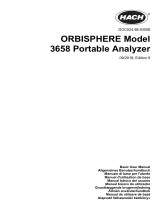 Hach ORBISPHERE 3658 Basic User Manual
Hach ORBISPHERE 3658 Basic User Manual
-
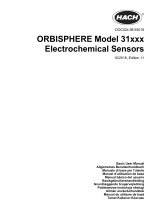 Hach ORBISPHERE 31 series Basic User Manual
Hach ORBISPHERE 31 series Basic User Manual
-
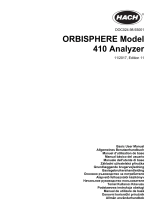 Hach ORBISPHERE 410 Basic User Manual
Hach ORBISPHERE 410 Basic User Manual
-
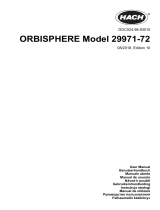 Hach 29971-72 Manual de utilizare
Hach 29971-72 Manual de utilizare
-
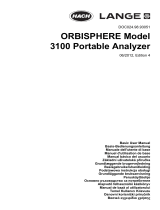 Hach Lange ORBISPHERE 3100 Basic User Manual
Hach Lange ORBISPHERE 3100 Basic User Manual
-
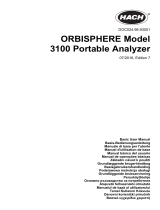 Hach Lange ORBISPHERE 3100 Basic User Manual
Hach Lange ORBISPHERE 3100 Basic User Manual
-
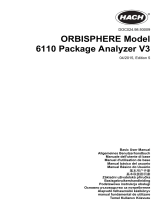 Hach ORBISPHERE 6110 Manual de utilizare
Hach ORBISPHERE 6110 Manual de utilizare
-
Hach TU5300sc Quick Manual
-
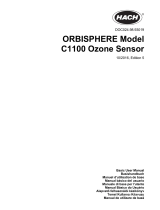 Hach orbisphere C1100 Manual de utilizare
Hach orbisphere C1100 Manual de utilizare
-
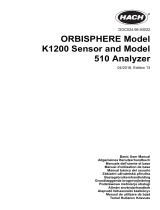 Hach ORBISPHERE K1200 Basic User Manual
Hach ORBISPHERE K1200 Basic User Manual
Alte documente
-
Hama 00186434 Air Quality Detector Manualul proprietarului
-
OASE AquaOxy 250 Operating Instructions Manual
-
Siemens EX875LYE3E/06 Instrucțiuni de utilizare
-
Bosch PXY675DE3E/06 Manual de utilizare
-
wtw TetraCon 700-...Ex Series Instrucțiuni de utilizare
-
Pontec 43189 Pond Fogger PondoFog Manual de utilizare
-
König GAMX360-KHOLD1 Specificație
-
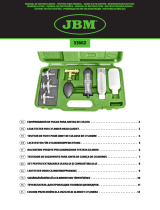 JBM 53662 Manualul utilizatorului
JBM 53662 Manualul utilizatorului
-
LG AHCS100H0 Manual de utilizare
-
Rosemount 499ATrDO Trace Dissolved Oxygen Sensor Abridged Manualul proprietarului































































































































































